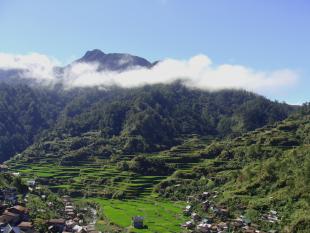Vanishing Treasures
of the Philippine Rain Forest
This site is under redevelopment. Its content is from 1998, but we will be updating it in the near future.
In 1998, as part of the centennial celebration of the Philippine declaration of independence from Spain, the Field Museum developed two exhibits that were displayed for most of the year. One dealt with Philippine history and culture; the other presented information on the remarkable biological diversity of the Philippines, referring to it as "the Galapagos times ten". The latter exhibit also highlighted the extent of habitat destruction in the Philippines, and the negative impact on the extraordinary biodiversity and on human society. As an adjunct to the biodiversity exhibit, two Field Museum biologists, zoologist Lawrence Heaney and botanist Jacinto Regalado, wrote a non-technical book entitled "Vanishing Treasures of the Philippine Rain Forest" that summarized available information. The book, which was published in 1998 by the Field Museum and distributed by the University of Chicago Press, is out of print, but we have converted it into a website with almost identical content.
In the years since the Vanishing Treasures was written, a great deal has been learned, and circumstances have changed. A great many previously unknown species have been discovered, so that we might now more properly refer to the Philippines as "the Galapagos times twenty". The human population has grown even larger, placing ever more pressure on the nation’s resources, and development has been plagued by too much mismanagement and corruption. But the number of protected areas has increased greatly, and the number of eco-tourists to those parks has increased vastly, leading to an expanding appreciation for the natural beauty of the Philippines and the importance of protecting the remaining natural forests. The number of people, both foreigners and Filipinos, engaged in management of wildlife and protected areas, and in research on biodiversity, has increased substantially, and the amount of information reaching the general public is far greater than in 1998. What will happen next is uncertain - whether the nation achieves environmental stability and learns to fully appreciate itsmagnificent natural heritage, or spirals into environmental and economic decline, is unknown. But it is entirely clear that the choice between these outcomes is just that - a choice. It is up to the citizens of the Philippines to decide what they want their country to become. The choices are clear.

